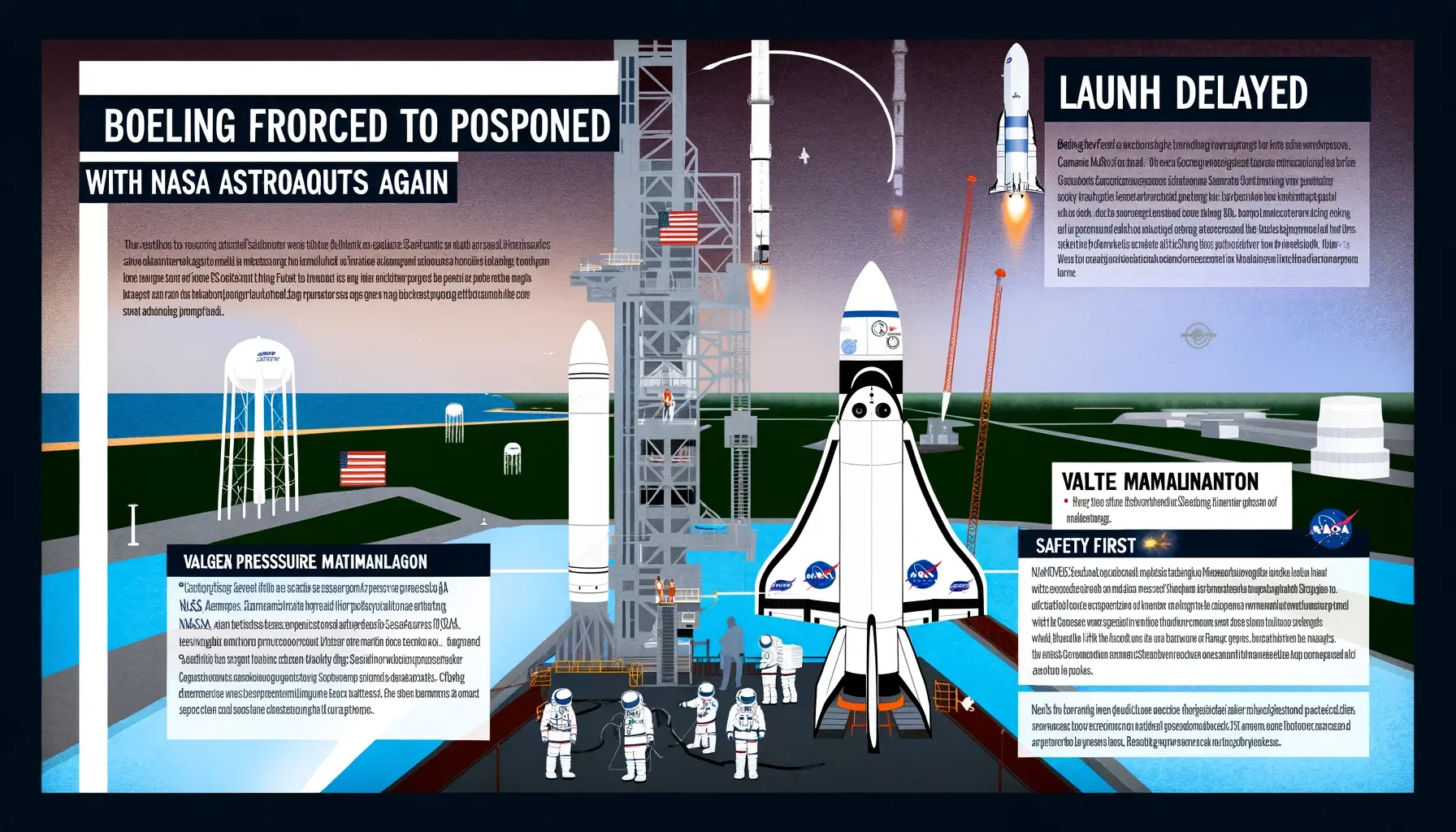Unfortunately, Boeing will have to delay the inaugural crewed launch of its new Starliner spacecraft to the ISS once again. The last try, scheduled for May 6, 2004, was scrapped two hours before liftoff when a vital bladder valve in the rocket's top stage jammed. Boeing's Starliner spacecraft — which has faced a number of delays and technical issues in its construction to this point — has suffered a high-profile failure.

Key Points
- Launch Delayed: Scheduled launch on May 6, 2024, called off two hours before liftoff.
- Valve Malfunction: An oxygen pressure-relief valve on the Atlas V rocket's upper stage caused the delay.
- Safety First: NASA and Boeing prioritize safety, conducting thorough checks before any future attempts.
- Tentative Reschedule: The next potential launch window is now set for June 1, 2024, but this date is subject to change.
Critical Issue: Valve Malfunction
The delay was blamed on a balky oxygen pressure-relief valve in the rocket's upper stage, which began acting up barely four hours before liftoff. The team had to stop the launch of this was an open hazard to the mission safety and the crew. In line with safety protocols, an extensive evaluation followed, with suggestions that the valve might have to be replaced before there could be further tries.
A Series of Setbacks
The latest delay adds to a number of hurdles the Starliner program has faced. Two photos of the recently landed Boeing Starliner which completed its maiden uncrewed test flight in December 2019 but was unable to reach the ISS due to software issues. A second uncrewed flight in May 2022 encountered fuel valve problems, but was finally able to dock with the space lab. The repeated stumbles has cast Boeing much embarrassment as the company tries to keep up with the Crew Dragon and establish a regular flow of human transportation to the ISS — comparisons made all the more difficult with part of the competition soaring way ahead since 2020.
Upcoming Launch Window
Boeing is nonetheless dedicated to the Starliner program in spite of these obstacles. June 1, 2024, has been proposed as the next possible launch window; however, this date is still open to change based on more evaluations and planning. Safety is still the first concern for NASA and Boeing, and they will not move forward with the launch unless every system has been properly inspected and found to be operating as intended.
Impact and Implications
The delays have significant financial and reputational implications for Boeing. The company has invested heavily in the Starliner program, competing with SpaceX for lucrative NASA contracts. Each delay postpones potential revenue and impacts Boeing's standing in the aerospace industry. However, the commitment to safety and thorough testing is crucial to ensuring the success and reliability of the spacecraft.
Conclusion
Despite several obstacles, Boeing's Starliner program is still firmly committed to success and safety. The crew plans to move cautiously and make sure all systems are ready before trying another launch on June 1, 2024, which is the next possible date?
While Boeing persists in resolving these technical concerns, the public and aerospace community enthusiastically anticipate the Starliner's successful launch, which will include NASA astronauts.
As NASA and Boeing strive to accomplish a successful and safe flight to the International Space Station, keep checking back for updates on this evolving story.
